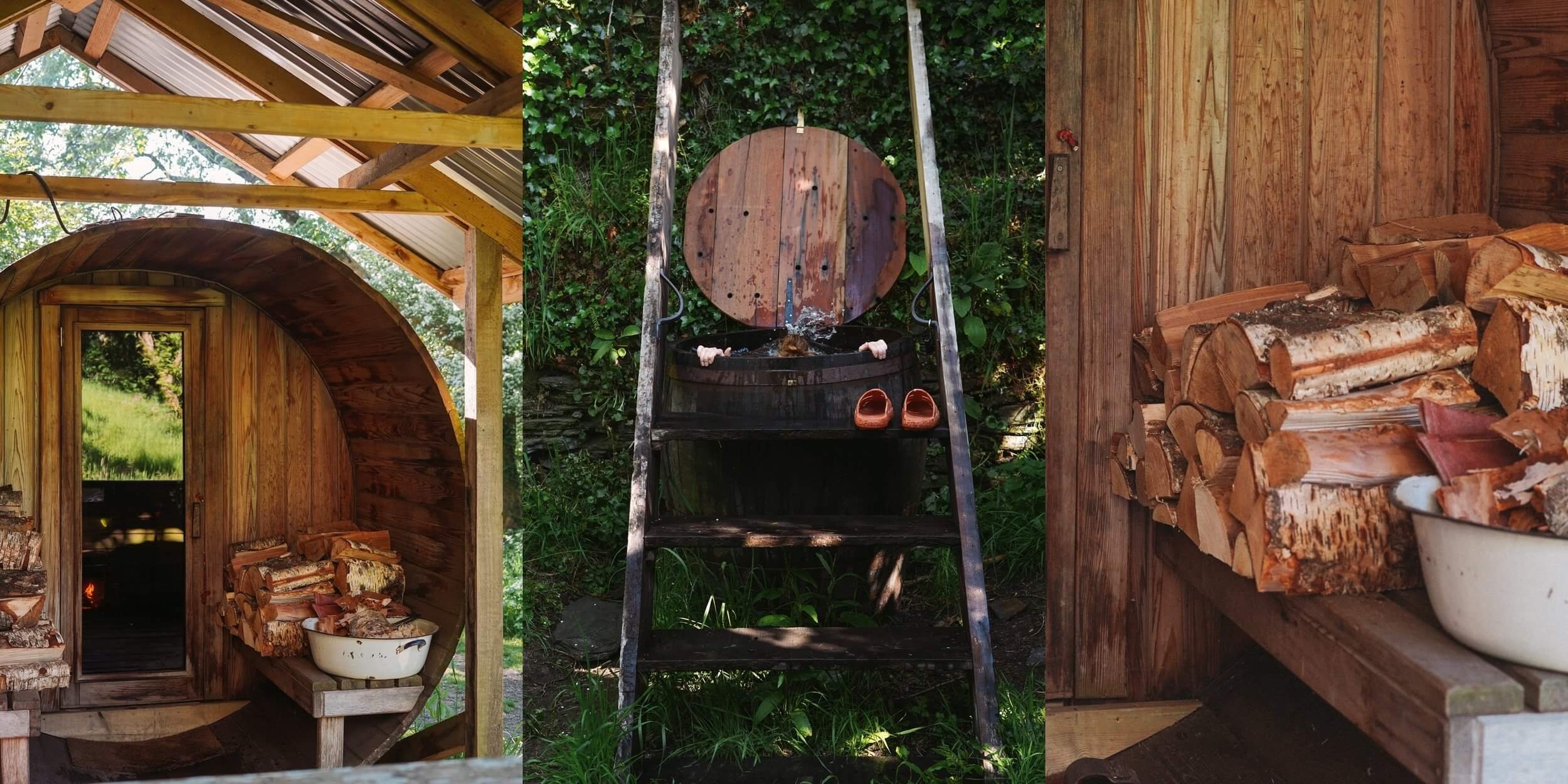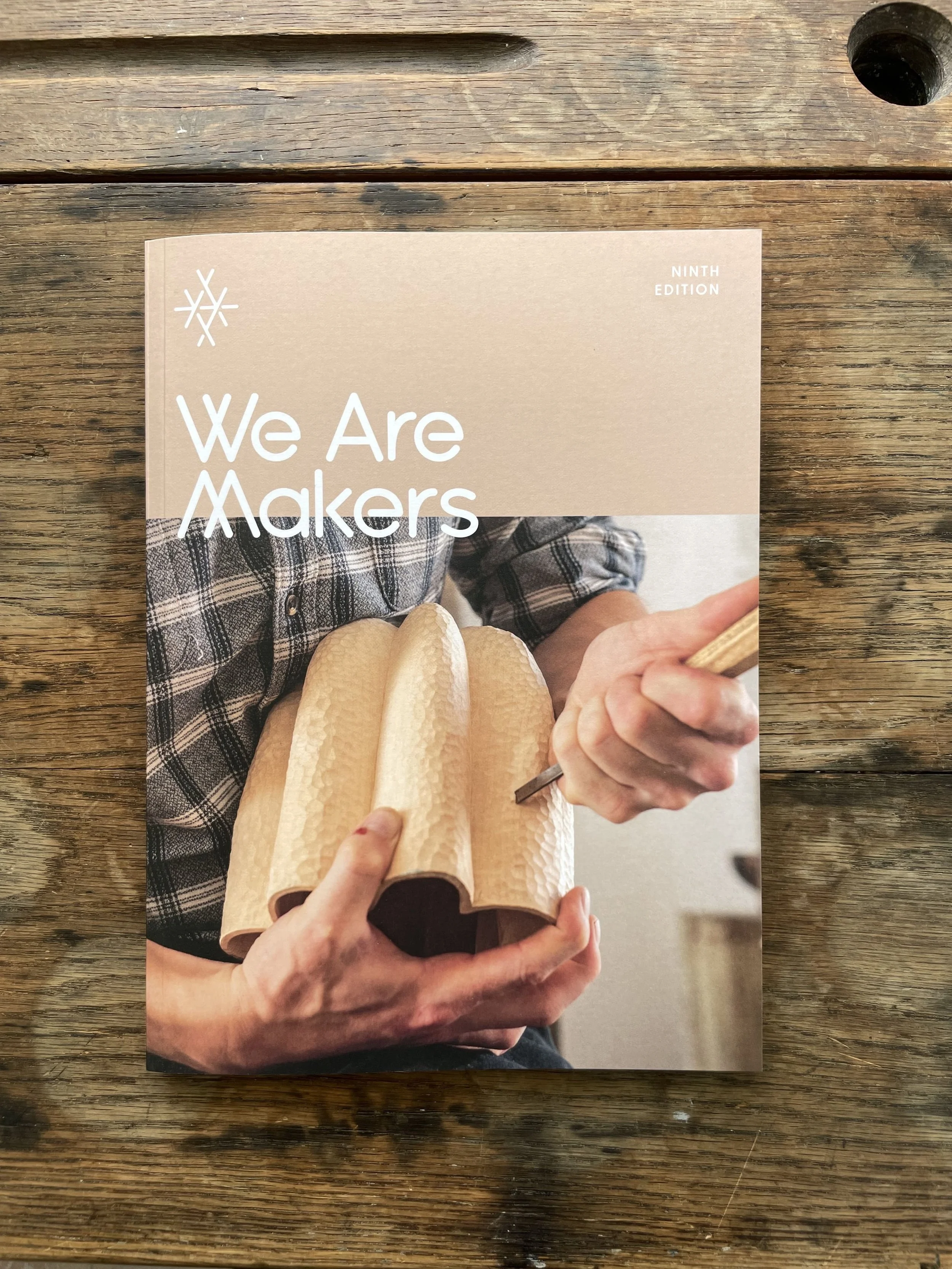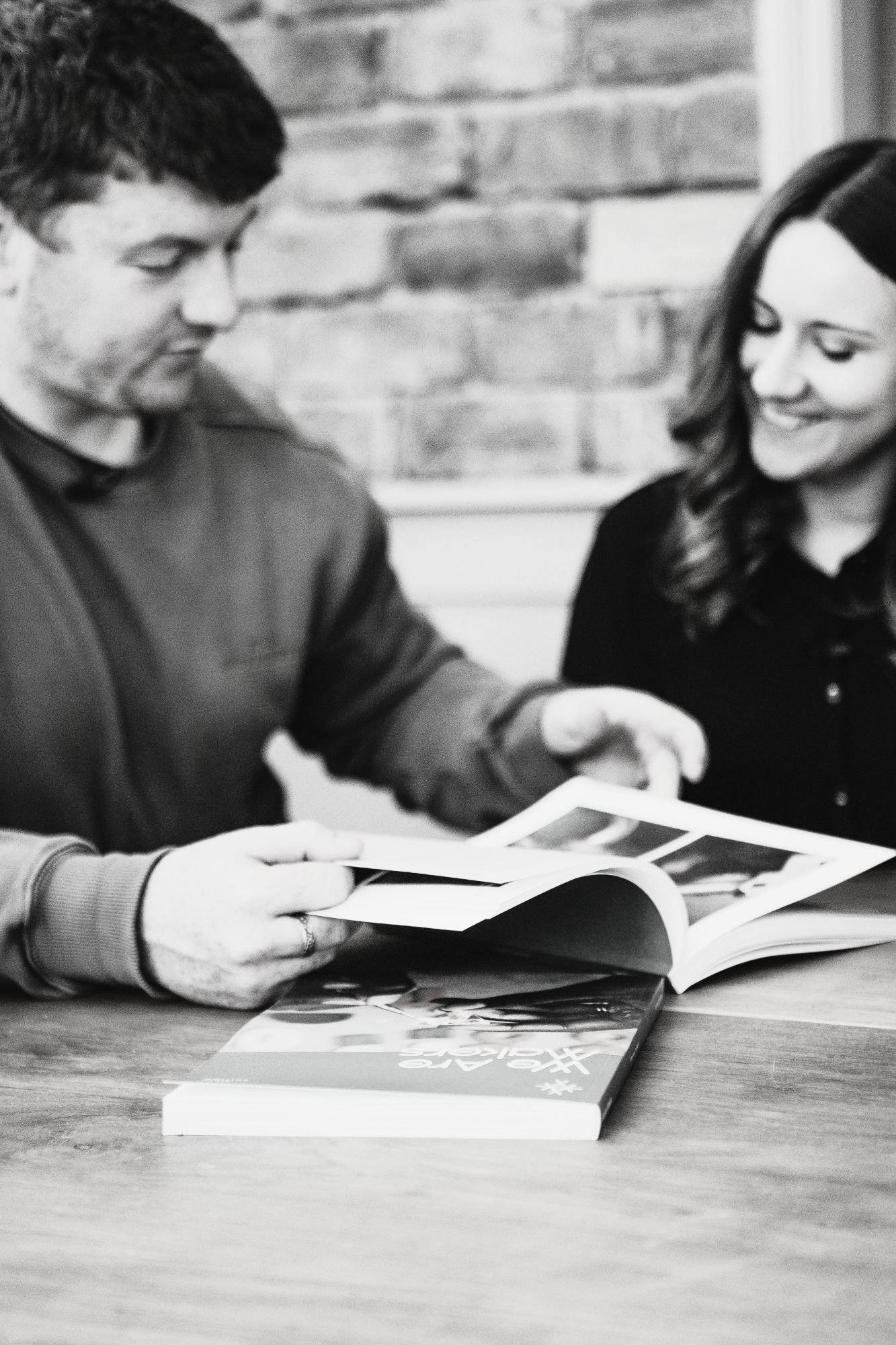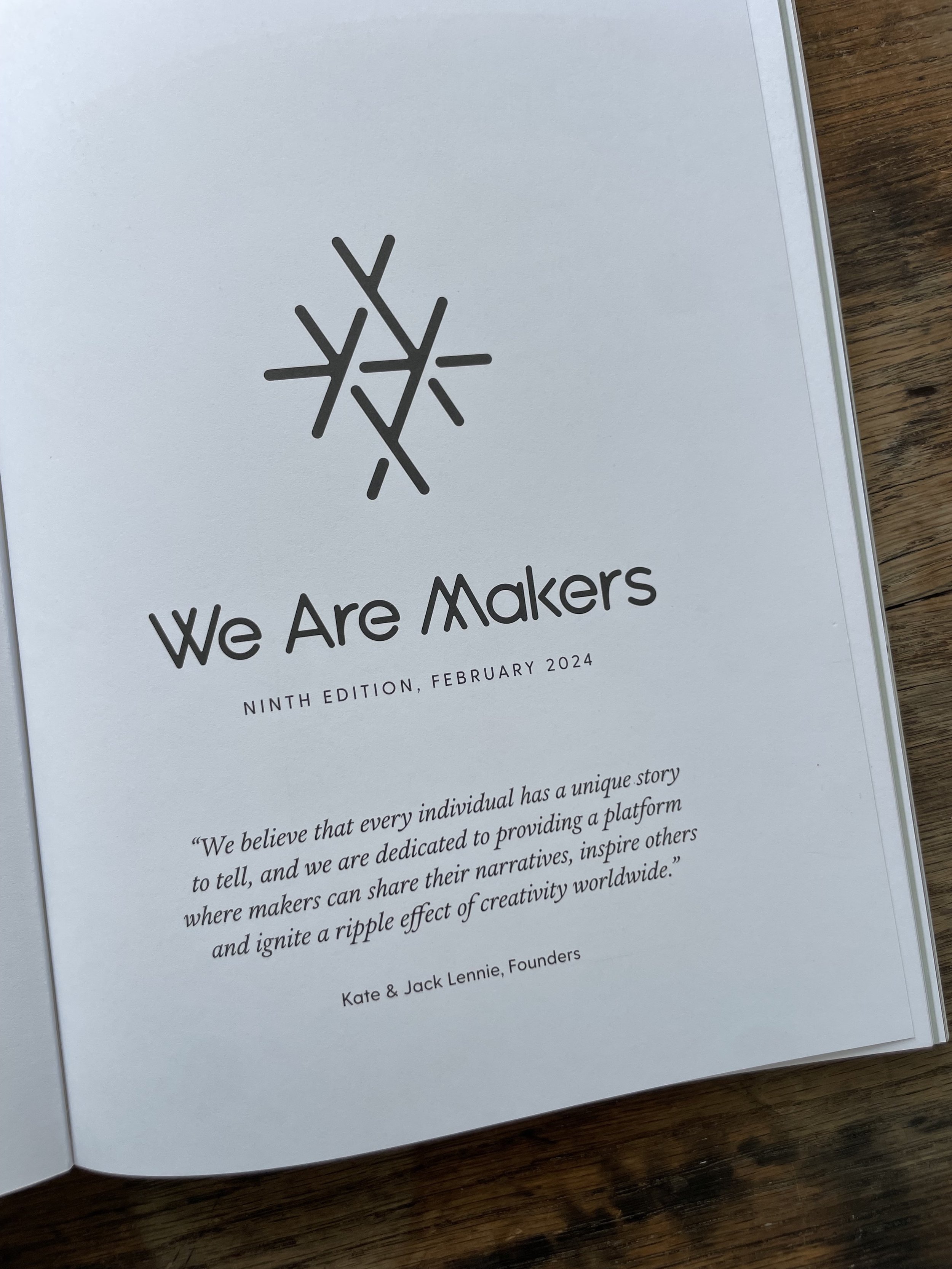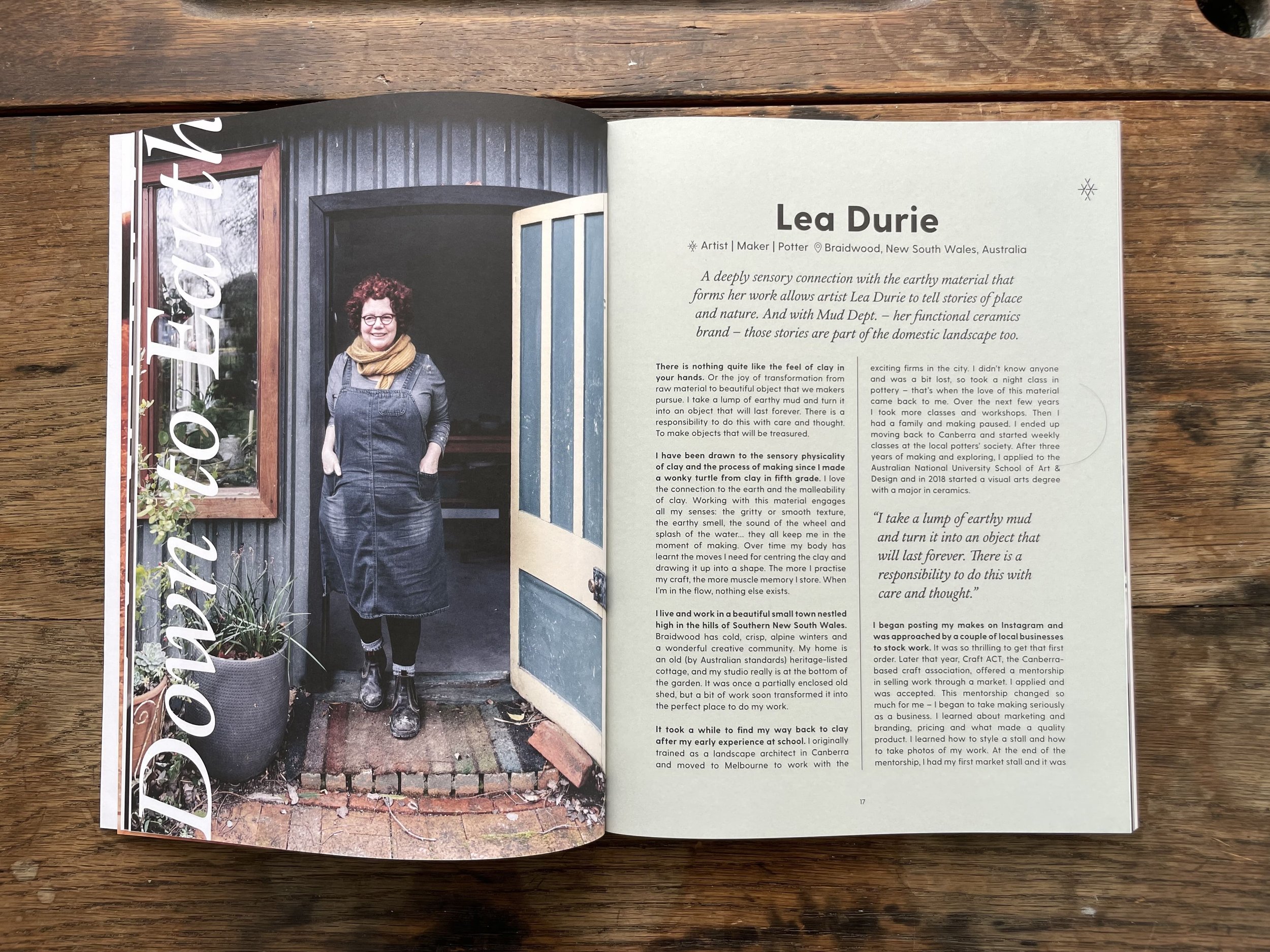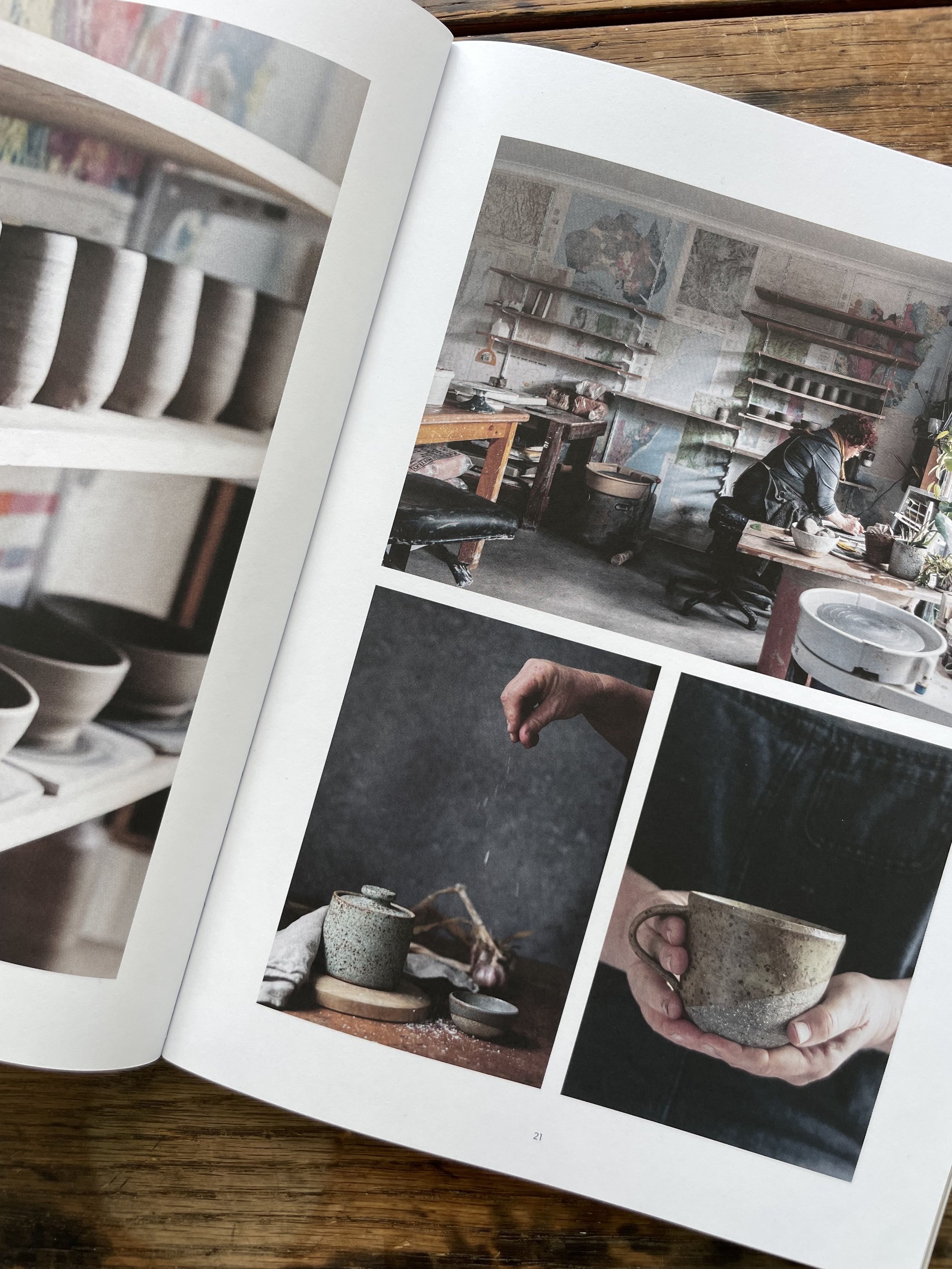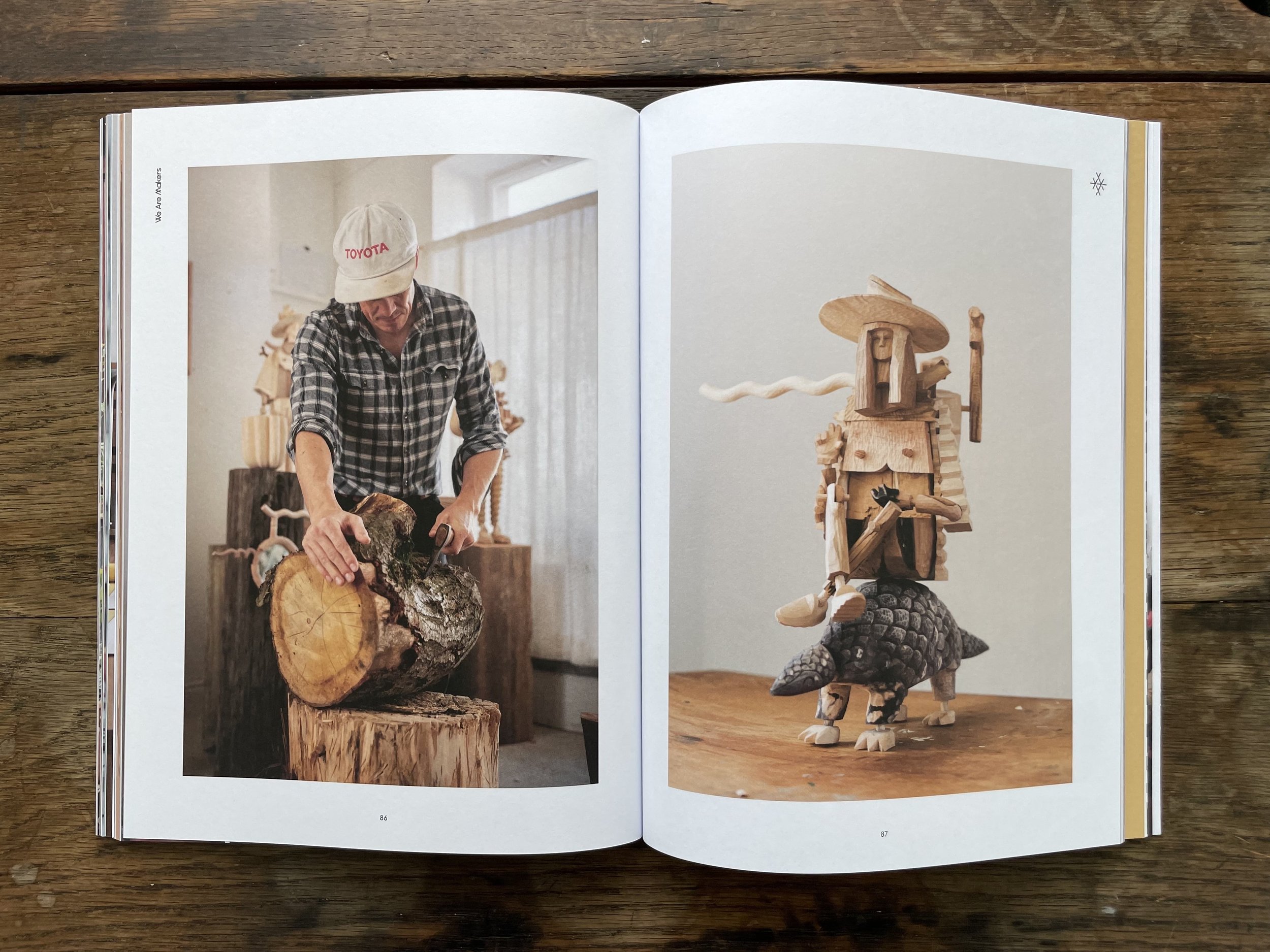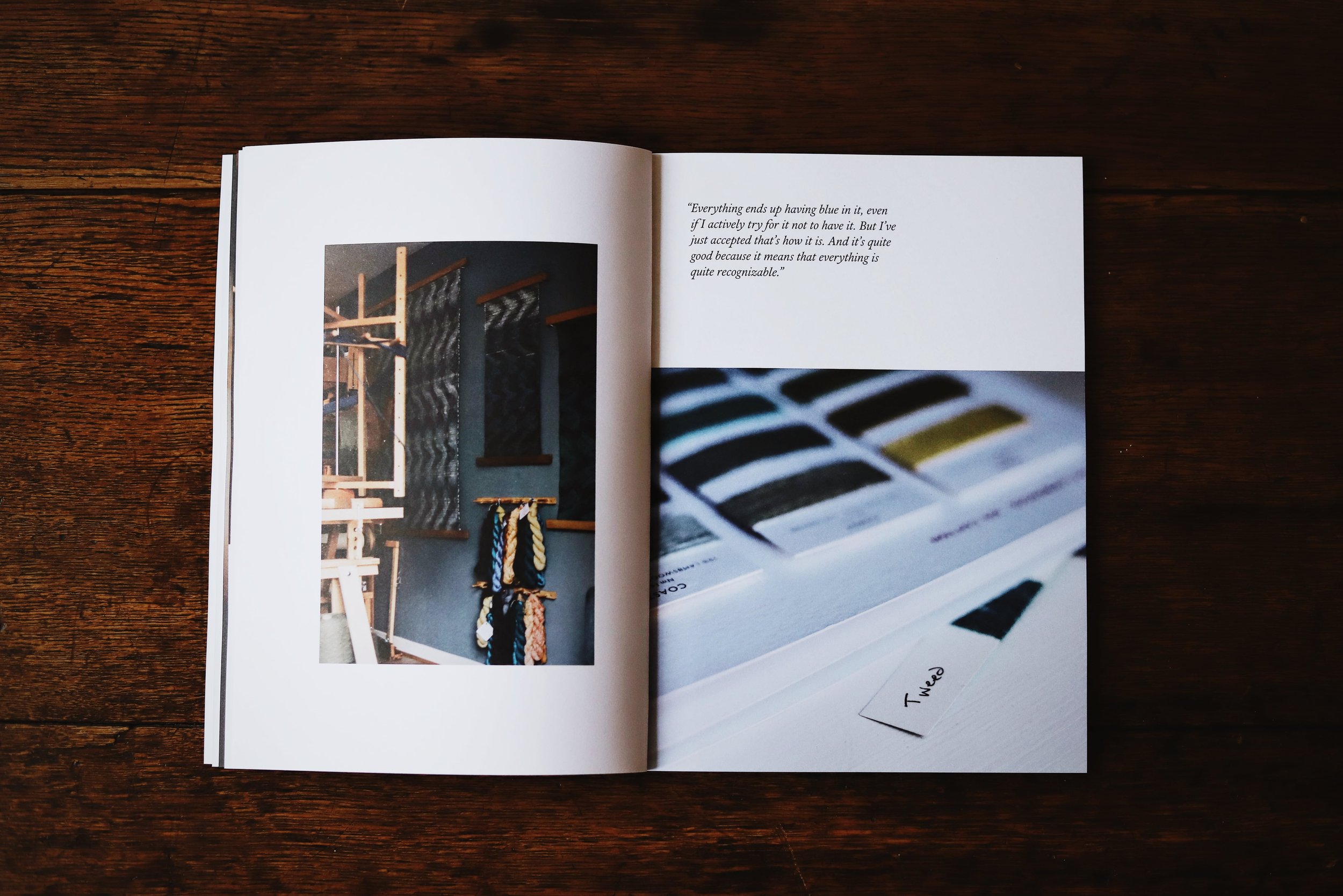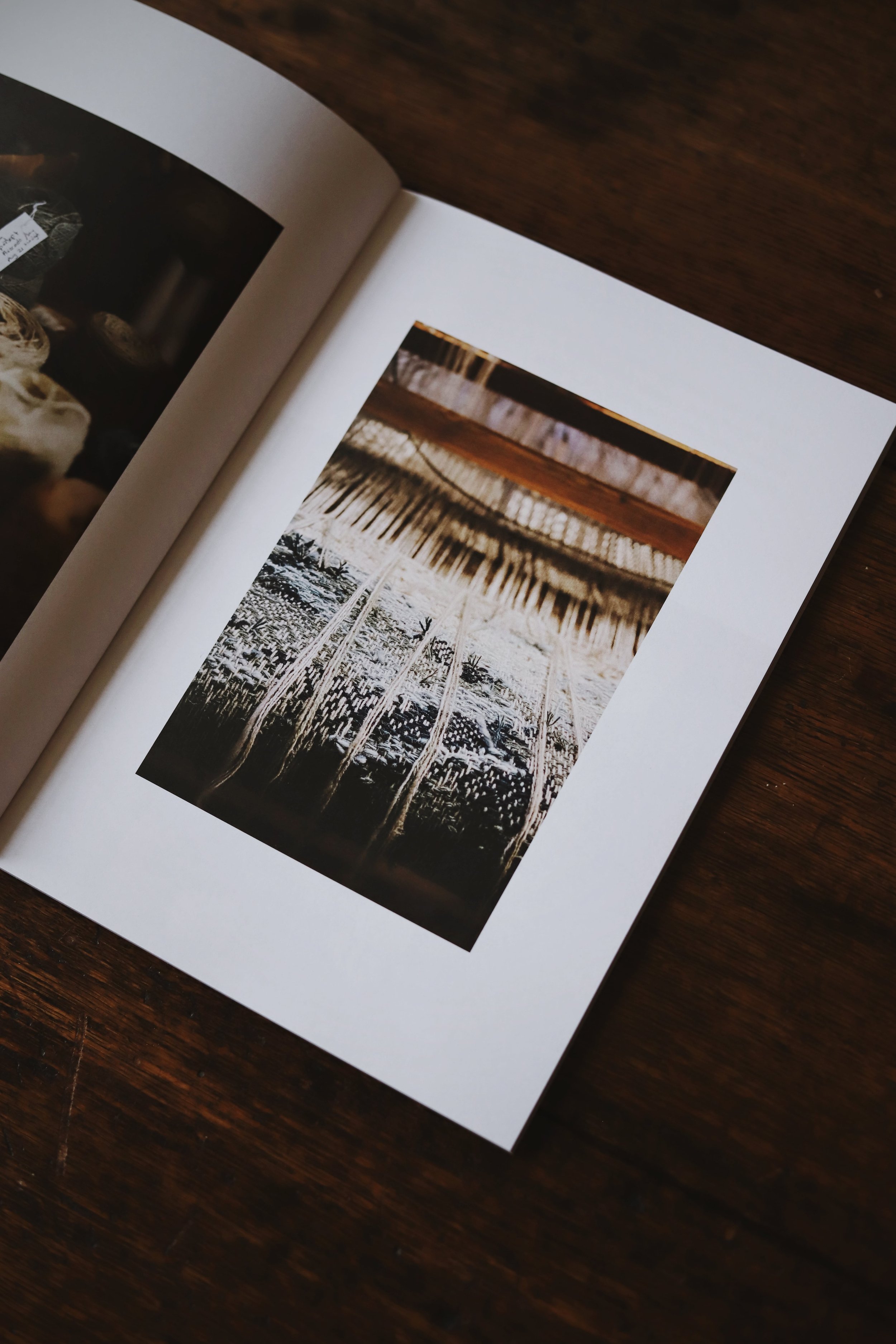The Art of Brand Storytelling with WAX Atelier
In this month’s ‘Art of Brand Storytelling’ Q&A, we talk to WAX Atelier co-founder Lola Lely about the warm and fragrant world of wax.
From the importance of fostering connections and collaboration to why everything begins with imagining the story, read on to discover the creative joy of exploring one material, the challenges of scaling an intentionally slow business and the importance of nurturing young talent through ancient craft.
“We imagine stories before we do anything.
The story is definitely the beginning, and it runs all the way through.”
Image shot by Aloha Bonser-Shaw, all images courtesy of WAX Atelier
Wax Works: A Story Of Light And Delight.
In this enlightening conversation, we talk to WAX Atelier co-founder Lola Lely about discovering the warm and fragrant world of wax, the importance of fostering connections and collaboration, and why everything begins with imagining the story.
WAX Atelier is a London-based studio created in 2017 by Lola and Yesenia Thibault-Picazo. Using natural materials and traditional techniques, they make hand-dipped candles and a seasonal collection of distinctive wax-based objects and textiles.
Their goods are stocked worldwide. They’ve collaborated with Toast, Liberty, and Burberry and created a wax sculpture for the Royal Academy of Arts.
Read on to discover the creative joy of exploring one material, the challenges of scaling an intentionally slow business and the importance of nurturing young talent through ancient craft.
Q: I’m curious why you are so fascinated and obsessed with wax. What is it about the material and why did you choose it as the one you wanted to work with?
A: WAX Atelier was founded in 2017 by Yusenia and me. We both come from a design and craft background. Craft wasn't what we studied, but this is where we found our interest and curiosity because we both explore ideas through materiality and making.
Craft led us into the world of all these fascinating traditions and materials that have been around forever. How we came to wax was through our teaching roles. We both taught at Central Saint Martins on a course called ‘Material Futures’. One of the briefs to the students was to choose a material and really go into depth, to understand everything about it from its cultural history to its future potential.
The outcome was so interesting that we became fascinated with that approach. We’ve never given ourselves that kind of task and that sort of focus to look at a material and really understand its breadth and what its future possibility could be.
So we both discussed what material we could look at, which had been overlooked, perhaps, or something that was almost in front of us that we hadn't really thought about very much. We came to the conclusion that wax featured in both our works, many times on different projects.
So we said, well, it must be wax.
Once we started thinking about wax, I thought, actually, this is such a universal material. Everyone knows what wax is and what a candle is. But I bet you nobody actually really knows the material or has touched the raw material, including ourselves. That's when we really went deep into it and decided to find some wax and to start playing with it.
Luckily for us, just around the corner from our workshop is a beekeeper - The London Honeyman and he gave us some wax and we just thought this was an incredible material because it features in so many different disciplines from food to fine arts to everyday households and we just said, okay, so let's start exploring wax. And it all took off from there.
We learned how to make our first candles. We looked on YouTube and found all of these obscure videos about people making candles in their backyards. So we invented some tools of our own, started making some candles, and just found the whole material fascinating.
After that, we held some workshops. We like to share our craft and see how other people engage with it.
From then on, it's just become something much bigger and broader than we imagined. It's turned into a business, but it has created opportunities for ourselves, the brand, and other people in the community. Since 2017, lots of people have come through our doors, whether through collaborations with brands or through employing and training local people.
When we're working with others, it's the vehicle for us to connect with other people. Making is so tangible and tactile, which is something we're losing more and more because lots of people aren't connected to materials or making anymore, and so much is digital now.
We've shown that it's beyond fun, you can turn it to business as well.
Q: I'm very interested in the stories of brands and particularly with makers and people that are really skilful at something and have really mastered a particular craft. I was interested in the meaning of candles. If we focus on that as the main way people encounter or think of wax. There's so much significance, isn't there, to candles in our cultures and in our daily lives and the way we use them, is that something you've looked into?
Definitely. We always consider the user experience and rituals and traditions because having a ritual connects you to moments, the past, and the present. Also, you can create new rituals that are completely your own.
Our starting point was something very traditional. We're always looking or thinking about the way we live now and the potential of how we could live and our spaces in the future. That's where we create new products or have a twist on something traditional to create something innovative. It's always going backwards and forwards and having those cross-references, which intrigues us.
It's a bit of anthropology, so you've got this candle, but now we have lighting, we turn on a light bulb and you get bright light, and the candlelight isn't as strong as, say, a light bulb, but it gives you a different type of light and it creates a different type of mood. Candlelight really does create a different atmosphere. Or if you light a candle early in the morning, it does something, it sort of opens up another realm and a different kind of perspective.
It's perishable, and it's precious. Some people say they don't want to burn their candles because they’re too precious. But when you do it, you realise the beauty of things. Sometimes, you have to lose things as well. But then, on the reverse side, we make these wax flowers. It's a bit of a dialogue about things that are to be thrown away. We want to create a really lifelike flower that lasts almost forever, that goes against cut flowers.
So we’re always slightly controversial in a very light way, where we're sort of saying the opposite of things, because we want to make a point of that. But we try to do it in a beautiful and functional way by just making people think, and because we've come from a place of naivety as well.
Q: I love that you still have that same curiosity for what else is possible. You're always approaching everything with that thought and interest. We've covered the craft side of WAX Atelier really beautifully. I'm interested in how you balance that with the commercial parts of the business. It’s been really interesting to watch how you've grown and to see the success you're having. But how do you balance this very slow, thoughtful, beautiful craft that you're doing with the realities and practicalities of making it a business?
Well, in terms of the practicality, we've had to upscale quite a bit. It's still handmade, but the actual tools that we have are scaled-up versions of what we were doing when we were making a batch of five candles. So we've just had to design things. We have this carousel, it's almost like a contraption basically, it goes around and around, and then you have its cantilevers, and we designed that and got that made in Denmark. It's looking at our tools and thinking about problem-solving and finding ways of making the process more efficient for us without compromising on the quality. We had to think about maintaining the craft, but also commercially and on a humanitarian level.
We’re always thinking about how we can improve, how we can do things better. By default, I think that’s helped us produce more candles or products because the orders started to come in. It's really lovely to have people like your products and want to buy them.
Q: From a brand story point of view, your storytelling hasn't changed. It’s so consistent and still feels very personal, slow and beautiful. How have you managed to maintain that despite scaling up?
From day one, we've always been like that, maybe sometimes to our detriment, where we imagine stories before we do anything.
We're very visual people, and thankfully, because we have a design and practical background, we can make certain things a reality. We've got lots of different skill sets in the studio — a photographer, a designer, makers, and people who can write and speak well. We're a team of just five people, but it feels very natural. It's the business side that we've had to learn to navigate rather than the design and storytelling side.
Q: I love the expression you used of ‘imagining the stories at the beginning.’ Can you tell me a bit more about that? Is it the final product or how you present it to people?
The story is definitely the beginning, and it runs all the way through. In the beginning we're influenced by lots of different things in terms of our cultural background and where we live in East London. It's very multicultural, history, film, theatre, all these sorts of things we pick up and we have a conversation about, and it's just the way we work; it's very collaborative. These ideas almost percolate and build on it, and then it's always based on what we feel we would like to manifest.
We don’t ever think, ‘Oh, you know, maybe people would like this’, we don’t ever say that to ourselves when we decide to do something; we're very impractical. We just think, ‘Oh, we like that’ and therefore we just go and do it.
Then we buckle down and get to the practicalities, and we do things on a shoestring most of the time. There has been no investment in our business; we've just done everything with our own money from our own pockets, and we give it a shot and see where it goes.
When people ask us where the ideas come from, that's where - we give ourselves time to reflect and allow inspiration to come. Then we just go and do it and see what happens. If it’s successful then great we'll make another batch, but if not, it doesn't matter we still enjoy just doing it.
We’ve been quite lucky most of the things that we've tried out it's been really well received.
Q: I think that can be really helpful to creative people running businesses. There can be so much pressure as you've got to think of the market, and actually, your confidence and clarity of your purpose and vision are obviously so strong that you can create things with this sense of risk and freedom that you believe and trust in it. When you're willing to go all in and not doubt or compromise, it creates something that's so much stronger and really resonates.
Definitely. There are a few brands out there that we've encountered that are doing great work. But most of the time, we don't look outside. A business guru would probably say you should do your market research, you should look at everything, but sometimes you shouldn't because the minute you do that, you start to self-doubt, and it's quite intimidating. I mean, you can look all day. And I think sometimes it’s good to think about what you would want.
We would never release anything or do anything that we didn't enjoy or thought didn’t have some sort of value or purpose to us. That has been our philosophy from day one, and it hasn't changed. That is why we just really like coming to work and doing what we're doing.
Q: What's the next chapter for the WAX Atelier story? What's the thing that you're curious about at the moment and that you're experimenting with?
The next chapter is that we have a new premises in Abney Park in Stoke Newington, that was granted to us by Hackney Council and the Abney Park Trust. It's a place where we are going to create and interact and engage more with the public. So that's very exciting. It's going to be an experimental space and it's right in the middle of the cemetery so we'll see the changing seasons as there are about 180 species of trees in the park. And there's all this history in terms of the people who were in the artistic community who lived here and they are buried in the cemetery. So it has quite a powerful history and narrative with the nature around it.
Our first project is going to be with young people between the ages of 18 to 24. We're going to be working with them, with the raw materials and inspiration from the Park to create a collection of unique things. We can't say what yet, but it's going to be really interesting. Collaborating with that age group is going to be interesting because they've got a lot of ideas, but also a lot of challenges. So we're really keen to tap in and cross-pollinate ideas and create something new for us as well
And the other new chapter is that WAX Atelier will be delving into the world of aromatics. So we're looking at one species - which is going to be the orange - and we're going to explore it in all its different guises to create a collection of very naturally fragrant things.
Q: I love the way you say things with the openness to what that might be. You mentioned you don’t like to look at what your competitors are doing but are there other brands, perhaps in totally different industries that you really love, particularly in terms of storytelling?
There's a collective called Assemble, they’re taking architecture into art and into this whole culture of making and living. They're so interesting. They are curators at the Royal Academy of Arts this year, and they won a Turner Prize. It's interesting how thinking of the practice that is about the built environment, but can steer and veer into all sorts of directions. But there's definitely a running thread, and you make connections.
The other brand is Ffern. We love that they work with the seasons, launching projects, creating beautiful films and the narrative around it all is quite special. We’ve had a conversation with them in the past about collaborating, so there’s definitely something there, a synergy between us. I think they work in a very inventive and imaginative, but also sensitive, way. And you can feel that through their imagery and the product is very special.
Thank you to Lola for taking time to share her insights on how they approach so many aspects of their business, it was such an interesting and inspiring conversation. You can find WAX Atelier’s latest work on their website and follow along with their story on Instagram.
Want to discover more brilliant brands? The stories continue on Instagram @simplemattersmedia and sign up for our monthly newsletter ‘StoryWorks’
The Art Of Creative Brand Storytelling With Potter Jacques Monneraud
Stories Sculpted in Clay: Jacques Monneraud's Viral Ceramics
Ex-advertiser Jacques Monneraud's pottery videos are a hit on Instagram, with millions of views. To create them, he asks himself, 'What would make me fall in love with ceramics although I don't care about it?'
Read our Q&A with the talented Frenchman and discover how he turns pottery into brand storytelling that captivates even non-ceramic fans.
All images courtesy of Jacques Monneraud
This story begins with a simple Malteser chocolate.
Jacques placed the little brown ball on a pottery wheel and slowly shaped it into a tiny vase. I smiled watching the Instagram film, then laughed out loud when he ate the ‘vase’.
That playful video has since had over 1.5 million views.
Frenchman Jacques Monneraud shares and sells his pottery with brilliantly crafted storytelling full of delight and wonder.
"The world of ideas is a bit like the one of dreams," Jacques muses. "I constantly ask myself…'What would make me fall in love with ceramics although I don't care about it?'"
With a background in advertising, Jacques understands the power of brand storytelling. In this Q&A, he generously shares his creative process, his humility and humour belying the thought, talent, and effort involved.
I'm thrilled to share this conversation with you.
Q: Before studying ceramics, you worked for 12 years in the advertising industry. Can you tell us the story of how and why you left that all behind to become a ceramist? And what drew you to working with clay?
I started as a graphic designer/illustrator and quickly became a Creative Director in an advertising company. During those years, I gradually drifted away from what I loved to do in the first place, which was creating. As someone who grew up in a family of artists and makers, I always pictured myself working with my hands someday. But here I was, spending hours in meetings discussing brand strategies. When I realised that, I decided that it was time to give this dream a try. After a few months searching for this "maker job", I stumbled upon a video of someone working at the potter's wheel. It randomly appeared on my feed and totally caught me off guard. I was instantly hooked. I loved everything about it, the material, the fact that it's just you and a lump of mud, the variety of things you can make out of it... I booked a class the same day and quit my job a few weeks later.
Q: Your creativity comes across in everything you do, from the innovative designs of your ceramics to the playful way you present them, with product descriptions full of character and the stories you tell in the films you share on Instagram. Where do your ideas come from, and how do you approach the development and innovation required to bring those ideas to life?
That's a tricky question. The world of ideas is a bit like the one of dreams. Of course there are ways to find a creative idea. You can approach a subject from different angles in order to make it look funny, original, crazy etc, depending on the message you want to convey. But it would be very hard to dissect and analyse all the brain connections that play a role in the birth of an idea.
I constantly ask myself the following questions: What would I love to see/watch/touch/read? What would be so cool that I'd want to share it? What would make me smile? What would make me fall in love with ceramics although I don't care about it? Because at the end of the day, it all boils down to you and someone else's interest.
As for bringing those ideas to life, it depends... Some projects are easy to make and others very hard. But whichever it is, I always start with the same state of mind, the one of MacGyver (I loved that show when I was a kid). You have to pick a lock with just a chewing-gum? Okay. Let's find a way.
Q: The cardboard series is incredible. I remember the first time I saw the pieces, I couldn‘t believe they were made of clay. The attention to detail of the glaze that looks like tape is so clever and skilful. Can you share the story of the process of that collection? It’s such an original idea, and it must have been so hard to get right. Were there moments when you questioned if it would work?
Thank you :) I must say that research is part of my daily routine, in parallel to my more classic tableware pieces. I'm always exploring ideas. I like to open doors, even though they end up nowhere. I have dozens of unfinished projects and ideas. As for the cardboard, it's failure that pushed me towards this collection. I was unsuccessfully trying to obtain a specific glaze effect that I love, so I started thinking about a ‘raw collection’, made of unglazed pieces. From that moment on, I started to explore different clays and combinations of clays mixed together, with no particular idea in mind other than finding a nice balance between colour and texture.
One day, I obtained a mix that made me think of a cardboard chunk. I thought about pushing it further and because I have always been very sensitive to things that time deteriorates, things that don't last, I instantly loved the paradoxical nature of this project: unalterable cardboard. I really liked the idea of being able to freeze fragility.
From that moment on, I did dozens of tests, be it about the colour, the texture, the optical illusion, the fragility, etc. Until one day, a ceramist friend of mine drops by and, staring at a ceramic prototype, says "oh you're working with cardboard now?". It was a small coffee cup and she was just centimetres away from it. I thought to myself ‘time has come to make a real collection out of this’.
Q: For someone relatively new to their craft, you seem unafraid of setting yourself challenges. Creating the Roland Garros trophy using the clay of the Philippe-Chatrier centre court is a brilliantly ambitious idea. Can you tell us more about the King of Clay project and the film you made, which has had two million views on Instagram?
This illustrates what I was trying to say earlier about creativity and its mysterious ways... One day you buy some Mentos, and a few days later you buy a can of Coke. You fall asleep and when you wake up, your brain suggests that you put the Mentos in the can of Coke. You've made no effort to think about it, yet the idea is here. I've always loved tennis and I watched every game of Rafael Nadal. That's the Mentos. A few years later, I was researching ceramics and read this surprising story: tennis clay was invented by two players who decided to crush vases from Vallauris. And that's the Coke can...
It quickly became clear that, for the idea to be pure, the clay had to come from the real Parisian court. This was my first challenge. With no connections whatsoever to the Tennis world, I thought that I could better my chances with a prototype, so that's the first thing I made.
Once I had it, I knew that the time of the people I was trying to reach was precious, and that I'd need a strong, clear presentation. With the help of a talented friend, I created a mobile website to explain the project. By doing so I ensured that the idea wouldn't be distorted along the way.
From this point on, I followed the "six handshakes rule" (the idea that all people are six or fewer social connections away from each other), and started making phone calls. It actually took me a lot more than six friends but I eventually found a way to reach Roland-Garros' staff. They loved the idea and sent me several kilos of the real clay.
Then the biggest challenge started... because until then I had completely underestimated the complexity of the trophy. In the video, I say that I really came close to giving up. It's sincere. The only thing that kept me going is the "I've gone too far to give up now" feeling. I'm sure you know what I'm talking about :).
Replica of the Roland-Garros trophy using the clay of the Philippe-Chatrier center court. It took Jacques one year and five months to complete. Within the first 24 hours the full film (which you can watch on his Instagram) was viewed half a million times.
Q: Ceramics have such a high risk of failure - from the modelling to the firing to the drying process - so much can go wrong. It must take a lot of bravery to undertake some of your projects. How do you cope with the failures, mistakes and setbacks?
Not well! When I first started working in advertising, my teammate and I created an ad where you see Jesus walking toward water and, although you expect him to walk on it, he eventually drowns. The copy was saying this: ‘There is no miracle. Just a lot of work.’ To this day, I still think it's very true.
People tend to believe that working with clay is relaxing and that quitting your job to become a ceramist will allow you to have more time to yourself... It's the complete opposite. In fact, I dare you to find a job this hard, where you need to turn mud into gold every day and be both Steves at the same time (Wozniak and Jobs).
How do I cope with failures and setbacks? I listen to Kendrick Lamar, read the Harvard Business Review and watch Little House on the Prairie. It goes something like this: Stay humble, work hard and be nice.
Q: You are a talented storyteller. There’s a playful quality to everything you share, and you often talk about a ‘touch of foolishness’ - can you tell us more about why you take that approach? Does it help creativity to have fun and not take it too seriously?
First of all, I think that unless you're a doctor in South Sudan fighting hunger and poverty (my younger brother does that), nothing is serious.
Then, I choose to base my business on social media platforms. Not because I like them, but because in my opinion, it would be a big mistake to close a door to the whole world when you aim to sell things.
Today, these platforms are all about entertainment! How can you have fun watching my content if I'm not having fun making it?
There is this ad agency mantra that I love, "We're not invited to the party, so at least let us bring some champagne".
Q: Your films are brilliantly entertaining to watch, and it seems like you enjoy making them, but they’re also so well produced - they must take a lot of time to plan, film, and edit. Artists and makers often struggle to balance the time they spend creating versus the time they give to marketing and selling their work. How do you manage the creative side of your business and the more commercial aspects?
I do enjoy making them :) I would have loved to be a film director, but I'm way too shy. I know that what I'm about to write here will annoy some people, but nowadays, being a ceramist is 30% being a good maker and 70% being a good salesman. I knew that before I started and that's probably why I took the leap. After years selling things I can focus on becoming a good maker. It's impossible, but I want that balance to be 100%-100%.
Q With your background in advertising, why do you think storytelling is important to a business and selling? What do you think makes a great brand story?
We used to buy products. But now that we have made so many of them, in every colour or material possible, we want them to come with a story. It's one of the few good aspects of our society, because we tend to give more attention to what we buy and own. I think that brands shouldn't be so different from people, and the same goes for their story. Burger King is a funny dude you know, Nike is someone who inspires you, Apple is your crush and Patagonia is the friend you respect... A good brand story is a true and honest one. A great brand story is one in which there is also audacity, courage and loyalty.
Q Are there any other brand stories that you especially admire and enjoy?
I recently discovered this French brand named Kidur and beyond its exceptional products, I particularly loved its story. Two Frenchmen set up this fabric company just before the Second World War. During the German occupation, they hid Allied soldiers and used the company's premises for resistance work. Once the war was over, it was the foreign soldiers who helped the company get through the fabric shortage that hit Europe. The brand survived and thanks to Kidur, the whole region prospered. Magnificent.
Q What advice would you give someone wanting to change career and industry and follow a creative passion in the way you have? Is there anything you wish you’d known when you first started out or that you would do differently?
I'm tempted to say "Just do it". But Dan Wieden once explained where the inspiration for the famous Nike "Just do it" came from. It was inspired by the final words of a death row inmate who was facing execution and said, "You know, let's do it." So... I don't know. Depending on your situation, I think it's a bit more complicated than the usual "life's too short, let's go!". If you allow me I'll rather leave this decision to them and say this: If you did "just do it" and changed career, do "think different".
Thanks to Jacques for taking the time to share his thoughts and insights with us in this interview. You can find Jacques’ latest work on his website and follow along with his story on Instagram.
Want to discover more brilliant brands? The stories continue on Instagram @simplemattersmedia and sign up for our monthly newsletter ‘StoryWorks’
Brilliant Brand Stories of Creativity
As part of our ongoing Brilliant Brand Stories series, this month we’re celebrating stories of creativity. From the heartfelt paintings of Cat Spilman, to the heritage textiles of the London Cloth Company, the meticulous styling of Camilla Wordie, and the craftsmanship of Rosa Harradine's brushes and brooms.
These brands beautifully showcase the essence of creative passion in both the items they produce and the stories they share. We hope they inspire you to bring a touch of artistry to your own brand narrative.
From around the world, each in a different industry, all committed to daring to do business differently.
Cat Spilman ‘Mama’, image with permission from the artist
1. “to lose that sense of self-consciousness, that anxiety for perfection”
Artist - Cat Spilman
For Cat Spilman, painting is a meditative process, where rather than having any preconceived idea on how the piece should look, it is instead an expression of a particular moment and feeling.
In this way, each painting becomes a kind of self-portrait,
“They’re all snapshots of who I am in the moment and what I’m dealing with… When I’m painting I’m not trying to paint with any kind of message or specific thought in mind, I’m just painting based on how I’m feeling in the moment. Then when I look at the painting days or weeks later, I can see what that was about.”
Cat Spilman in her studio with ‘The Cineman’, image shared with permission from the artist
Using mainly housepaint and house painting brushes - originating from her background as a scenic artist in film and television - Spilman consciously limits her colour palette to encourage creativity in her work.
Part of her practice involves attempting to let go of any expectation or self-criticism and she is endlessly inspired by the innate creativity of her own daughter.
“I used to be so precious with sketchbooks. If a page wasn’t aesthetically successful I would tear it out and feel upset and annoyed with the process. Now I buy thick, cheap notebooks and try to be as loose as possible - ignoring pages that are ugly and just taking inspiration from the tiny bits that do work. One of my goals is to lose that sense of self-consciousness, that anxiety for perfection. It hasn’t happened yet…”
Spilman’s current solo exhibition is "Days in Goodness Spent" at Bark Berlin Gallery. She also has a group show opening in Copenhagen at Gallerie Christoffer Egelund on the 21st of June.
2. “No one parties like a weaver”
Weaving & textiles - London Cloth Company
London Cloth Company is the brainchild of Daniel Harris who, completely self-taught, made it his mission to rescue and restore a number of original looms dating as far back at 1890. He opened the first mill in London for over a century and is currently restoring Elvet Mill in West Wales back to its former glory. Daniel now has the largest collection of restored looms in Europe.
He shares his journey on Instagram with honesty and humour. From the highs:
“It’s go time. The day we made a warp and started weaving on a loom that had sat for over 30 years.”
to the lows: “I cannot even begin to list all the nightmarish things about setting up this loom.”
It is Harris’ creativity that has got him where he is today and it shines through across all parts of the business, from the products he makes, to his Instagram captions to the heroic job of dismantling and reassembling the often rusting, neglected machinery that has sat unused for over 30 years and get it working once again.
Food portrait of Camilla Wordie’s grandmother, photography by Natasha Alipour-Faridani
3. “moving objects by millimetres, adjusting angles by the degree”
Art director and stylist - Camilla Wordie
Camilla Wordie understands it’s the little details that make a big difference. Whether the micro-adjustments in styling a shoot to how the small habits in our everyday lives can spark conversation, connection and joy with others.
Inspired by routine and daily life, Wordie uses everyday objects to tell the stories behind her compositions with a playful yet minimal aesthetic.
One such example is Wordie’s brilliant recent exhibition ‘Eat to Live or Live to Eat’, where she interviewed 10 individuals, from artists to shop owners, designers, chefs and storytellers to learn their food habits. Based on each interview, Wordie created a ‘food portrait’, telling the stories of each person’s food habits, memories and the 10 ingredients they couldn’t live without.
Portrait of art director and stylist Camilla Wordie
“From anchovies to tinned peaches, ingredients you may love or hate”
Prints, plates and postcards from the exhibition can be viewed and bought online here.
Rosa Harradine in her studio in Wales
4. “slightly wonky with a beautiful indentation along the handle where a vine has grown around the hazel”
Brush and broom maker - Rosa Harradine
All Rosa Harradine’s brushes and brooms are made entirely by hand in her studio in West Wales. From sorting the broomcorn, cutting the sticks for handles, carving, sanding oiling, binding and finally stitching. The only mechanised part of the process is using a small chainsaw to cut the sticks for broom handles.
“I measure every piece of broomcorn by hand and sort it by length, and then quality. The scruffiest bits go on the hidden inside layers and the nicest pieces go on the outside. I stand at my workbench in front of the window and listen to a podcast as every single piece of broomcorn passes through my fingers.”
Image shared with permission, shot by Tara Juno Rowse
For Harradine, it is essential that her items are both functional and beautiful in their own right. Designed to feel tactile, something someone doesn’t want to put down (or put away), intended to be used just as much as admired hung on a wall.
As Harradine so beautifully puts it, “There are two types of people in this world. Those who think a brush would make a great present, and those who don’t”.
I am certainly one of the former.
Want to discover more brilliant brands? The stories continue on Instagram @simplemattersmedia and sign up for our monthly newsletter ‘Stories Matter’
Brilliant Brands Sharing Seasonal Stories
As the days lengthen and stretch into early summer, we're highlighting brilliant brands that master the art of seasonal storytelling. Discover the enchanting sculptures of Jess Wheeler, taste the true flavours of the seasons with Natoora, experience the simple joys of outdoor living at Fforest and embrace the seasonal colours crafted by The Natural Dyeworks.
These four brands beautifully capture the essence of the seasonal year and we hope they will inspire you to use the seasons in your brand storytelling.
From around the world, each in a different industry, all committed to daring to do business differently.
Jess Wheeler with limited edition Bronze Rhubarb Side Table. Image with permission from Jess Wheeler
1. “elegant, poetic and rooted in the raw beauty of nature”
Artist & Designer - Jess Wheeler
“In a world where so much of what we surround ourselves with are carbon copies, delivered in highly manufactured packages, I want to create objects where you can see the touch of the hand, that are full of wobbles and imperfections.”
Encompassing fine art, sculpture and interiors, Jess Wheeler’s playful creations draw inspiration directly from the wonders of the natural world. Jess transforms natural forms from giant cabbage and rhubarb leaves to mushrooms and ivy garlands, forging them from an ever-evolving array of materials including brass, bronze and plaster.
Finding inspiration from her own garden to her daily foraging walks, Wheeler’s latest collection, ‘Left, Right & Rhubarb’ is inspired by childhood memories of spring…
Image with permission from Jess Wheeler
“Rhubarb grows from a bright pink knuckle in the wintered soil, slowly at first and then with increasing luxuriance, announcing the new Spring. As children, our Granny would take my siblings and me to her rhubarb patch, whose leaves towered over us like fairytale parasols, to collect the bright pink stems, cook them, pickle them, share with each other.
In this collection, I’ve tried to preserve the sense of occasion, magic and playfulness that I associate with rhubarb. I cast huge leaves from life, and playfully articulate these joyous springlike forms into tactile usable sculptures.”
Natoora founder Franco Fubini with one of Natoora’s growers and suppliers. Image with permission from Natoora
2. “Microseasons to unlock flavour at every stage”
Food Supliers - Natoora
“Each fruit and vegetable has its own season, with subtle shifts that happen every day. We follow each one through its microseason — early, peak or late — noticing subtle shifts and hitting on unique flavours.”
Natoora exists with one clear ambition; to fix the food problem, working to reconnect people with the origins of the food they eat. Theirs is one of “radical seasonality,” with flavour at the heart of everything they do.
“We sought out flavour by connecting with small-scale growers across Europe. We knew that fruits and vegetables grown in their natural seasons taste best, but our mission led us to growers who also preserve local growing artistry, work with diverse varieties and enhance their ecosystems.”
From the varieties in their produce boxes to the recipes they share online, to the campaigning they do across the food industry, seasonality is at the root of their brand storytelling.
A favourite example of their creative approach to communicating their mission, is their ‘Radicchio Not Roses’ campaign, now in its third year.
Every year 250 million roses are grown for Valentine’s Day, when they are not in season. Natoora’s campaign encourages people to choose a seasonal alternative…
“Deep purple with tight, curled leaves or rosette-shaped with red speckles, bright red with crisp white veins or all hues of pink; we challenge you to find flowers more striking and vibrant than these radicchio heads.”
“At the end of their life as centrepieces, radicchio plants are eaten, not wasted. Their bittersweet complexity makes them ideal for cold-weather salads. Try with lemon, anchovy and garlic dressing or preserved lime and rose vinegar. Mix with fennel and blood orange or try it wrapped around hot smoked trout and kabocha squash onigiri (as an alternative to seaweed).”
Fforest owners Sian Ticker and James Lynch. Image with permission from Fforest
3. “the result of a dream….trying to remember what ‘simple’ can look, feel and taste like”
Accommodation, camping & events - Fforest
“A place to enjoy the simplicity, pleasures and beauty of outdoor living in an outstanding natural environment.”
Fforest is the result of owners Sian and James’ dream of ‘the simplest and purest of things wrapped up in a magical setting’.
I was lucky enough to stay at Fforest for their Gather festival with four friends and our kids. It was a magical time. We cooked, ate, played and slept outdoors, lighting fires, climbing trees, building dens, crafting, dancing, and swimming in the sea, closer to the weather, the tides, stars, the moon and each other. It’s a truly special place, that really does feel like the result of a dream.
Image with permission from Fforest
Sian and James’ connection with the land is evident throughout their storytelling, sharing the simple pleasures as the seasons shift. They host a range of events to celebrate those changes, from feasts to getaways to creative weekends.
“What makes Fforest? Care, growing, cooking, eating, learning, living, fire, adventure, community. Simple.”
The Natural Dyeworks founder Ros Humphries. Image with permission from The Natural Dyeworks, shot by Dave Bullivant.
“Hand coloured slowly with plants and care”
Homewares & Accessories - The Natural Dyeworks
“Crafting an ever evolving palette of colours through the use of petals, leaves, bark, roots & seeds”
The handcrafted, hand-dyed ribbons, homewares and accessories created by owner Ros tell the story of the seasonal year. Using ingredients foraged from the Kent countryside or sourced from food waste collected from local cafes, Ros uses the alchemy of plant-based dyes to capture the essence of the seasons.
“Our palette changes continually with the seasons, and the spectrum of colours available is dependent on the ingredients available such as nettles in spring for cool greens, coreopsis in summer for wild oranges, hollyhocks in autumn for soft blues, alder cones in winter for burnished golds.”
Working exclusively with natural fibres and dyes, Ros’ process is 100% natural. Collecting only what is needed for a single dye pot, all the products show a deep respect for nature and leave as little footprint as possible, “Waste water is reused on the garden and allotment, dye pulp is composted which in turn feeds our soil”.
Want to discover more brilliant brands? The stories continue on Instagram @simplemattersmedia and sign up for our monthly newsletter ‘StoryWorks’
The Art Of Brand Storytelling With 'We Are Makers'
“Everyone has a story to tell and each story is unique”
‘We Are Makers’ is a quarterly printed magazine celebrating the stories of creatives from across the globe.
The makers featured are all people who are mastering their crafts, valuing process as much as the final products and taking a stand against mass manufacturing.
Usually, the ones telling the stories of others, we asked founders Kate and Jack to share their own; it’s one of immense dedication towards their shared mission…
The act of making is fascinating; the ability to transform a raw material into something else, the skill of creating an object that's both beautiful and functional.
‘We Are Makers’ is a quarterly printed magazine bringing together stories of creatives from around the world. The makers featured are all mastering their crafts, valuing the process as much as the final results and taking a stand against mass manufacturing. The ‘We Are Makers’ community is about safeguarding traditions, ensuring sustainability, and inspiring future generations. There’s a slow, considered and gentle respect for the skill of handmade (hands are featured on every cover).
Read on for our Q&A with magazine editors Kate and Jack Lennie to discover their own story and their shared passion for making and storytelling.
Q: Your tagline is ‘We Tell Makers Stories’ - we would love to hear your own story…
A: We Are Makers isn't just our venture; it's a way of life for us—we own it, live it, breathe it. Our paths first crossed in 2011 studying product design at university. The culmination of our academic endeavours in 2015 marked the beginning of a wonderful journey.
We are situated just outside Glasgow, Scotland. From here we have curated a global community of makers and we tell their stories within the beautiful pages of our crafted printed magazine, a project that took flight less than five years ago.
We just knew we needed to do it, so we did it.
The past five years have been marked by immense dedication, resilience during challenging moments, and financial risks, yet driven by our profound passion and an incredibly fulfilling mission, we now get to work with amazing brands in support of makers and to travel the world talking with truly interesting and inspiring people.
Q: How do you decide which makers to feature and how do you approach telling their stories?
A: This is an often asked question. We love our magazine because of the diverse crafts we include. How do we decide? We scroll through Instagram and save any exciting makers/craftspersons/and artists to a folder. We also have a maker's submission form on our website which receives an overwhelming amount of submissions monthly. When we come around to planning an edition, we reach out to those makers both saved and submitted. Kate contacts each maker to explain our mission and how we can provide them with a global platform to tell their story. We give them a detailed document with everything they need to know and questions to consider when writing their story. We also choose a few makers to hop on a call and do an 'interview' with, really an informal chat, which we then transcribe for print.
Artist and maker Lea Durie featured in Edition 9 of We Are Makers magazine, images by Taylah Cunningham
Q: Why do you think having a great story is important for makers, creatives and small businesses and how does it help them share and sell their work and brand?
A: Everyone has a story to tell and each story is unique. When searching for makers to feature, Jack and I often come upon a fantastic maker on Instagram and get excited to jump onto their website and learn more about them; however, there's no about page and sometimes not even their name! I think it's important for makers to have an about page. It won't just be us who are curious; many customers or brands looking to work with the maker will want to know, so I recommend making it easy for them to find out. Last year, I gave our community a challenge to pin a picture of themselves and 'who they are' in the caption to the top of their Instagram profile. It's excellent for anyone landing on their profiles to find out who they are quickly.
Q: What do you think are the common threads that every great maker story should have?
A: Aside from hard work, dedication, and unwavering passion for their craft there is no common thread. A maker can come from any walk of life and find a place for themself.
Artist and maker Henry Wood featured in Edition 9 of We Are Makers magazine, image by Brook Wassall
Q: For many makers, their personal and business stories are very entwined, what advice would you share with someone on how to separate their life story from their brand story?
A: In our opinion, there's no need to maintain a strict separation; as a maker, who you are and what you do daily are inherently interconnected. We advocate for embracing the synergy between your personal brand and your business brand—fostering an environment of honesty and transparency. This approach not only enhances relatability but also encourages individuals to invest not just in your product but in you as a craftsperson. Sharing your beliefs, experiences, and journey contributes to a more profound connection, adding substantial value to your brand.
Pages from Edition 01 of the We Are Makers Photobook ‘An Honest Representation of the Modern Maker’
Q: Are there any particular stories that have really stuck with you from those you have shared since you launched?
A: Numerous stories have left a lasting impact on us, and what truly stands out is the remarkable community we've created over the years. Many of the featured makers have evolved into cherished friends. One notable example is our podcast, initiated over a year ago to complement our printed magazine. We spotlighted the story of Tim Cullen, a talented penmaker in Canton, Georgia, USA who had quietly followed our journey from the outset. Tim reached out to us via DM, expressing his desire to craft a handmade pen as a token of gratitude for us featuring his story in our magazine.
This unexpected gesture took Jack and I by surprise. Tim's appreciation for our work culminated in a unique pen bearing our engraved logo, prominently displayed on the front cover of edition six. Tim promised to send the finished pen to us in Scotland. At that point, our in-person podcast had primarily explored the UK and Europe, and the thought of visiting makers in the US had yet to cross our minds. However, spurred by our commitment to spontaneous travel in 2023, Jack and I embarked on a 35-day journey through the States for podcasting.
Our first stop was to thank Tim for his generous gesture personally, and in the process, we forged a friendship with him and his wonderful wife Tracy, who is also a maker; a full-time ceramicist. They have since become more like family than friends. The generosity displayed by the makers we've encountered along this journey has been nothing short of extraordinary. We thank every one of them who has been a part of this journey.
Jack and I are just two ordinary, ambitious, curious people who genuinely care about the people we feature. We never like the whole 'we feature you once' and never talk to you again. We want to build this community up and continue to help wherever we can.
Q: Which other brand(s) have storytelling that you particularly love? And is there a maker with a story you'd love to share?
A: None jump out at us, I suppose that is why we started this. We are enthralled by interesting people who refuse to walk the beaten track and choose to navigate the world their way. There's something I think many of us have lost in today's society—the ability to explore. Not only explore the world but, more importantly, explore our thoughts and creativity.
Kate and Jack Lennie in conversation with artist and maker Matt Jackson
Q: What’s the next chapter for ‘We Are Makers’?
A: Our journey has been an incredible evolution since our inception. Establishing a magazine has proven to be a formidable challenge—a relentless endeavour that continues to test our mettle daily. With a clear vision, we have a comprehensive list of objectives to achieve this year.
In our initial stages, we operated somewhat behind the veil of the 'We Are Makers' logo, but over the past two years, we've embraced the inclusion of our personal narratives. In a pivotal move in December 2022, Jack transitioned away from his full-time role to join forces with me in building We Are Makers. Since then, our collaborative efforts have propelled significant and swift growth. I believe that is why we have done so well with growing our community: by putting ourselves out there and being transparent and relatable to the people we feature and meet.
Over the past few months, we've been working on a new website that will become a hub for everything we do. We are working to extend our reach, and in doing so extend the reach of the makers we feature. We see We Are Makers becoming a 'media house' for all things maker-related. It will be a valuable resource.
Alongside this, we want to concentrate on more travel and video content. Travel gives us a unique perspective on how different cultures approach making, craft, and art, something we think is highly important to the development of one's creative career. We are currently discussing with and searching for prominent brands about the sponsorship for an upcoming video series we aspire to produce. So, more on that soon!
Want to discover more brilliant brands? The stories continue on Instagram @simplemattersmedia and sign up for our monthly newsletter ‘Stories Matter’









































